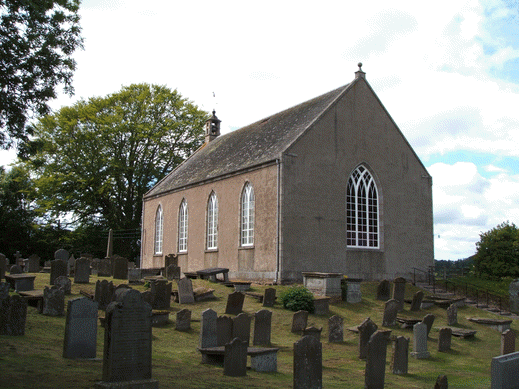Main Content
St Devenick
This Saint was associated with both Deeside and Caithness. He died: 887AD.
Along with St Manire, Devenick was the last of the Celtic apostles to bring the Gospel to the valley of the Dee. The story of St Devenick (or Devenic), as given in the Aberdeen Breviary, connects him with St Machar and we find marked traces of his cultus in the district supposedly evangelised by the latter. Devenick appears to have spent a considerable time in Caithness and to have died there. After his death his body was supposedly carried south to the neighbourhood of Aberdeen - historically to the area known as Banchory-Devenick. His disciples are described to have:
Till a place called Banchory;
And thare solmpni with honoure
Thai grathit for it a sepulture.
And one hym thare thai mad a kirk,
Quhar God yeit cesis nocht to wirk
Thru his prayere ferleis full fele,
To seek and sar folk gyfand heile.
Men callis that place quhar he lay
Banchory Dewynnik till this day."

There was an altar dedicated to St Devenick in the cathedral church of St. Machar in Aberdeen, and he was titular of one of the possessions of the cathedral, viz. the church of Methlick on the Ythan. The parish of Methlick has a spring bearing St. Devenick's name. A fair in that parish known as St Denick's Fair contains the name in a shortened form. The banchor with which Devenick is associated is well known and, very surprisingly, was situated close to another founded by St Ternan slightly higher up the Dee valley. The fact that two important seats of learning were situated so close together is almost unique and is, perhaps, a reflection of the fact that the north-east of Scotland was very much a power-house and source of Christianity in Alba at the time. Add to this that there were other major communities at Methlick, Kynõr (near Huntly), Mortlach, Deer, Turriff, Clova, Newtonmore, and Dunmeth (Glass) and the reader will start to understand the fascinating concentration of early Chritian missionary work in the north-east. To an extent this may reflect the fact that the area was relatively heavily populated with Picts of various tribes at the time. Writing in 1917, Archibald Scott lists 26 local Pictish centres at the beginning of the eighth century, of which 8 are in the north-east of Scotland. One can hardly conclude that this part of the country was in any way "backward" when it came to the matter of the spreading of the Gospel. Indeed, many parts had received the Gospel 150 years before St Columba had even been born!! Devenick's choice for his banchor seems, at first sight, to be a little strange. However, on inspection, it is seen to be placed near an important crossing point on the River Dee lying at the northern end of the Causey Mounth which, from earliest times, was the principal highway leading from Stonehaven and the south to the community which was to become the city of Aberdeen.
In addition, Devenick "went over to Caithness, to folk who were without the truth, and he prospered so well in short time there that he made them perfect in God's lore." As the patron saint of Creich, Devenick may have concentrated his labours in that district for a period, possibly in connection with the muinntir at Dornoch.
There is a very interesting article written by Tom Turpie - North-Eastern Saints in the Aberdeen Breviary and the "Historia Gentis Scotorum" of Hector Boece: Liturgy, History and Religious Practice in Late Medieval Scotland - which is available online at https://www.academia.edu/36079316/North_Eastern_Saints_in_the_Aberdeen_Breviary_and_the_Historia_Gentis_Scotorum_of_Hector_Boece_Liturgy_History_and_Religious_Practice_in_Late_Medieval_Scotland. It provides excellent background material for the student of St. Devenick.
small(transp).png)
